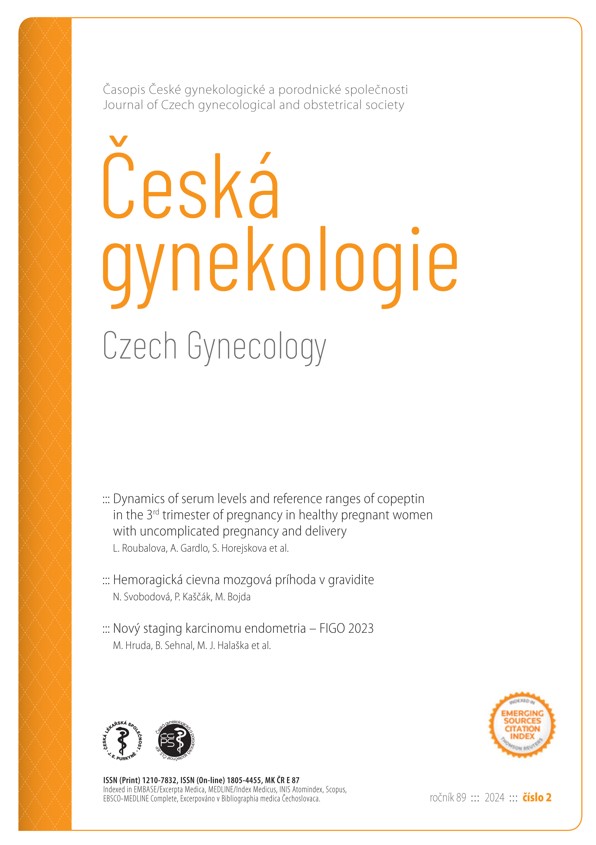New staging of endometrial carcinoma – FIGO 2023
Keywords:
endometrial cancer, FIGO, staging, molecular classification, updateAbstract
Aim: To review the changes in the new version of the FIGO 2023 staging system for endometrial cancer. Methods and results: The new FIGO 2023 endometrial cancer staging system provides key updates for the diagnosis and treatment of endometrial cancer. An important step in diagnosis is molecular classification, which allows more accurate risk stratification for recurrence and the identification of targeted therapies. The new staging system, based on the recommendations of the international societies ESGO, ESTRO and ESP, incorporates not only the description of the pathological and anatomical extent of the disease, but also the histopathological characteristics of the tumour, including the histological type and the presence of lymphovascular space invasion. In addition, the staging system uses molecular testing to classify endometrial cancers into four prognostic groups: POLEmut, MMRd, NSMP and p53abn. Each group has its own specific characteristics and prognosis. The most significant changes have occurred in stages I and II, in which the sub-staging better reflects the biological behaviour of the tumour. This update increases the accuracy of prognosis and improves individualized treatment options for patients with endometrial cancer. Conclusion: The updated FIGO staging of endometrial cancer for 2023 incorporates different histologic types, tumour features, and molecular classifications to better reflect the current improved understanding of the complex nature of several endometrial cancer types and their underlying biologic behaviour. The aim of the new endometrial cancer staging system is to better define stages with similar prognosis, allowing for more precise indication of individualised adjuvant radiation or systemic treatment, including the use of immunotherapy.


